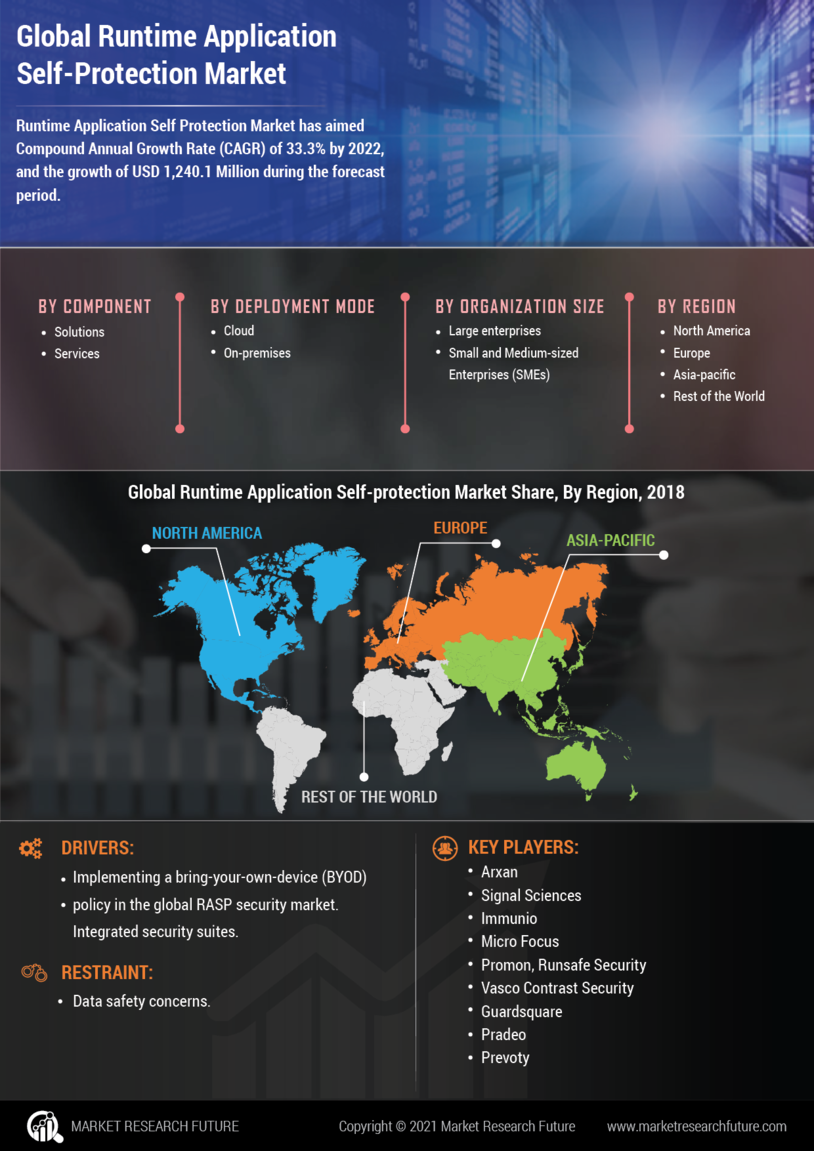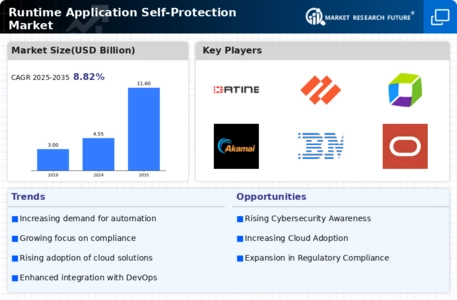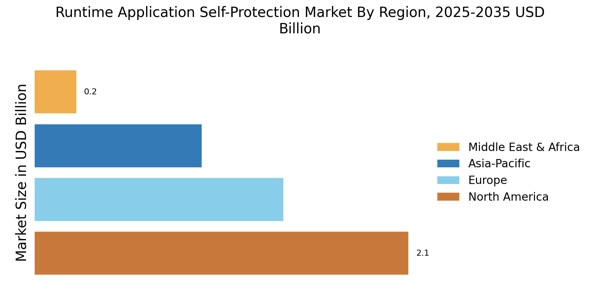Increasing Cybersecurity Threats
The Runtime Application Self-Protection Market is experiencing heightened demand due to the increasing frequency and sophistication of cyber threats. Organizations are recognizing the necessity of robust security measures to protect sensitive data and applications. In 2025, it is estimated that cybercrime will cost businesses over 10 trillion dollars annually, prompting a shift towards proactive security solutions. Runtime Application Self-Protection (RASP) technologies provide real-time protection by monitoring application behavior and blocking attacks as they occur. This proactive approach is becoming essential for organizations aiming to safeguard their digital assets against evolving threats.
Regulatory Compliance Requirements
The Runtime Application Self-Protection Market is significantly influenced by stringent regulatory compliance requirements across various sectors. Regulations such as GDPR, HIPAA, and PCI DSS mandate organizations to implement adequate security measures to protect user data. As compliance becomes increasingly critical, businesses are turning to RASP solutions to ensure they meet these legal obligations. In 2025, the market for compliance-related security solutions is projected to grow, with RASP playing a pivotal role in helping organizations demonstrate adherence to regulations while minimizing the risk of data breaches and associated penalties.
Shift Towards Digital Transformation
The Runtime Application Self-Protection Market is closely linked to the ongoing shift towards digital transformation across various industries. As organizations embrace digital technologies to enhance operational efficiency and customer engagement, the security of applications becomes increasingly critical. RASP solutions are designed to protect applications in real-time, ensuring that digital initiatives do not compromise security. By 2025, the digital transformation market is expected to exceed 2 trillion dollars, with RASP technologies being integral to securing the applications that drive this transformation, thereby fostering trust and confidence among users.
Growing Adoption of DevSecOps Practices
The Runtime Application Self-Protection Market is benefiting from the growing adoption of DevSecOps practices, which integrate security into the software development lifecycle. This approach emphasizes the importance of embedding security measures early in the development process, thereby reducing vulnerabilities in applications. As organizations strive for faster deployment cycles, RASP solutions are increasingly being utilized to provide continuous security monitoring and protection. By 2025, it is anticipated that the DevSecOps market will expand significantly, with RASP technologies being a key component in ensuring secure application development and deployment.
Rising Demand for Application Security Solutions
The Runtime Application Self-Protection Market is witnessing a surge in demand for comprehensive application security solutions. As businesses increasingly rely on software applications for critical operations, the need for effective security measures has become paramount. RASP technologies offer a unique advantage by providing in-application protection, which traditional security measures often overlook. In 2025, the application security market is projected to reach over 30 billion dollars, with RASP solutions playing a crucial role in addressing the security challenges posed by modern application architectures, including microservices and cloud-native environments.


















Leave a Comment